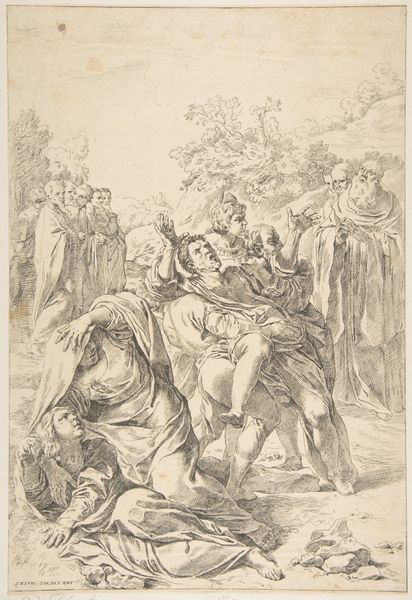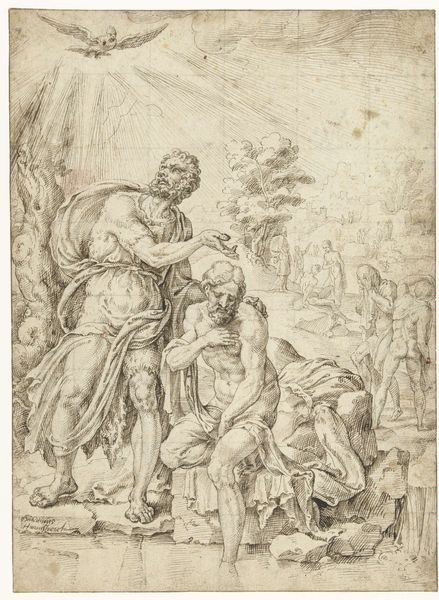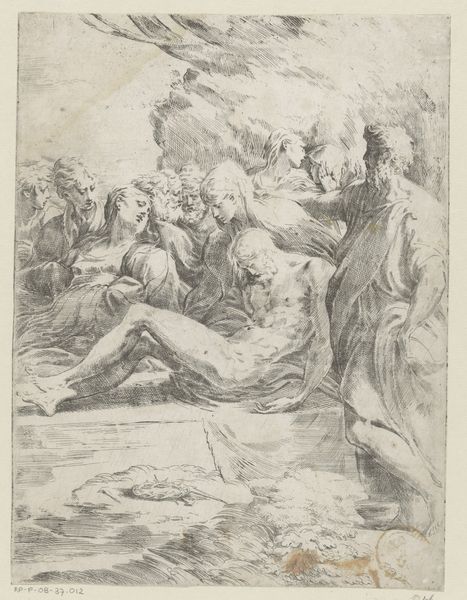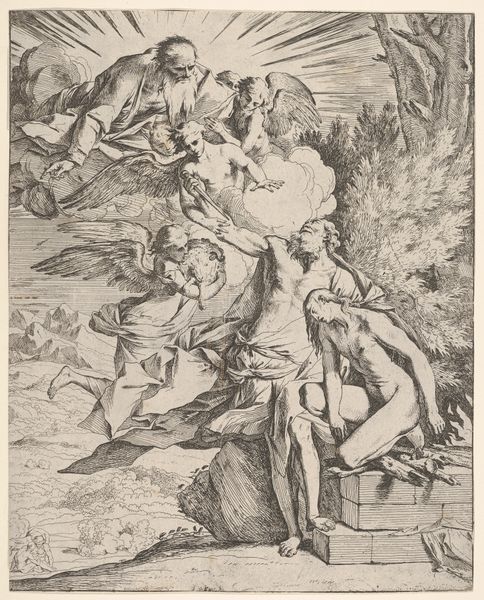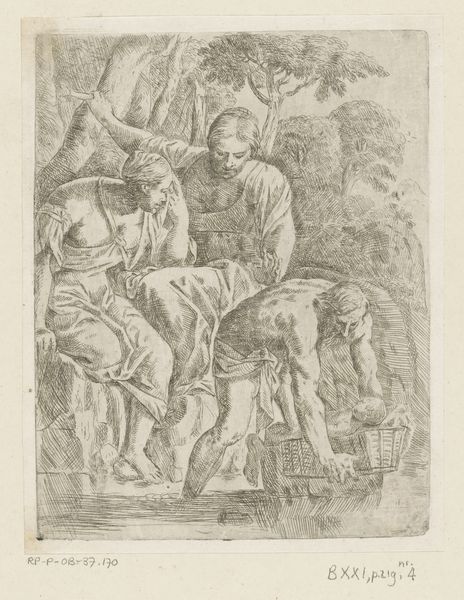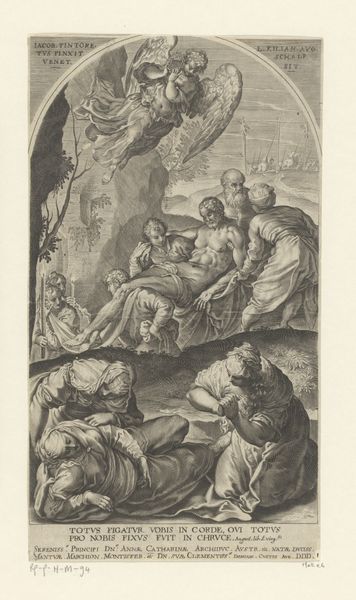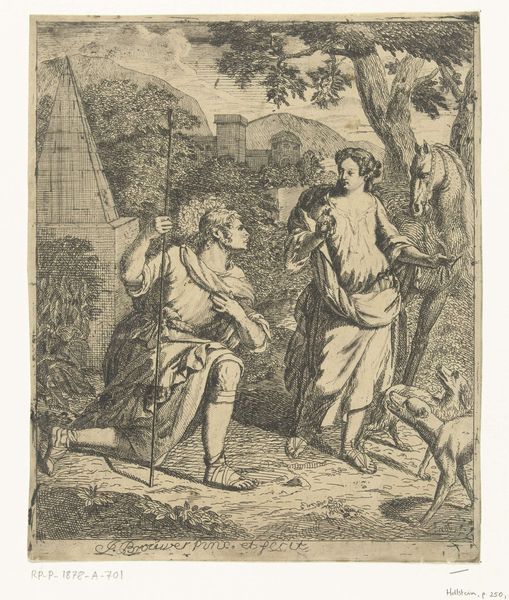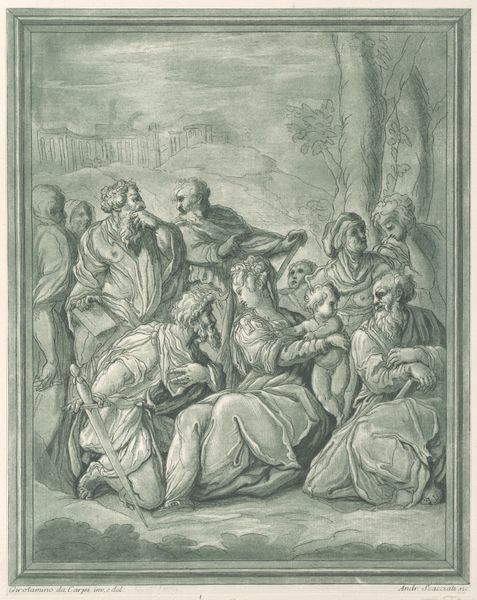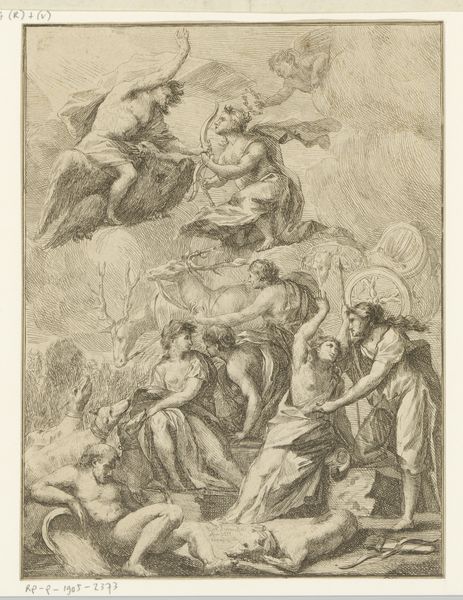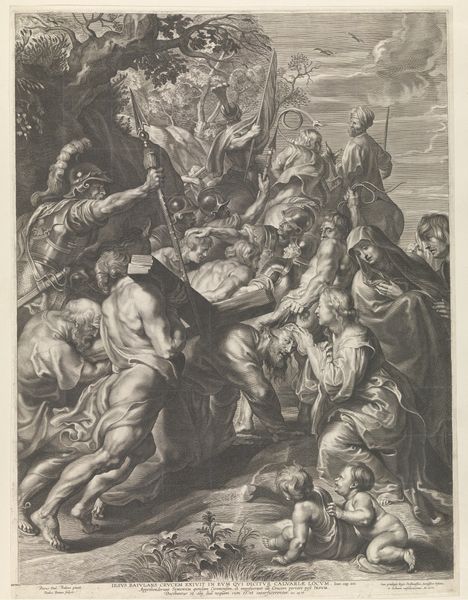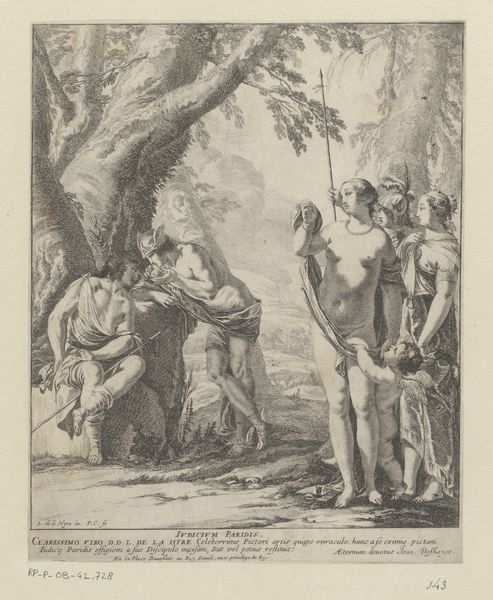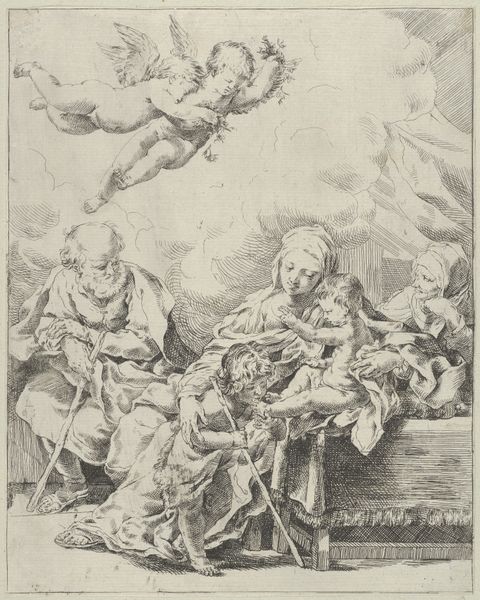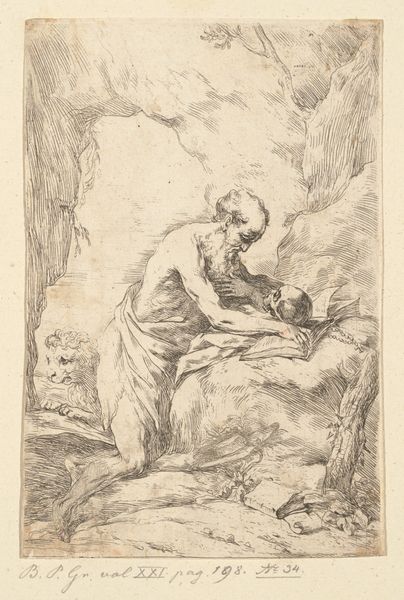
drawing, print
#
tree
#
drawing
#
light pencil work
# print
#
pen illustration
#
pen sketch
#
pencil sketch
#
junji ito style
#
personal sketchbook
#
ink drawing experimentation
#
pen-ink sketch
#
men
#
pen work
#
sketchbook drawing
Dimensions: sheet: 16 5/16 x 14 in. (41.5 x 35.5 cm) plate: 9 3/4 x 7 1/16 in. (24.7 x 18 cm)
Copyright: Public Domain
Curator: My first impression is how light it seems, almost airy. There's a definite sense of upward movement, don't you think? Editor: Absolutely, especially considering its rendered with pen and ink. It makes me curious about Maratti’s choices here, why employ the tools of a draftsman in service of a topic as lofty as "The Reward of Science," which the inscription indicates as its title. Curator: And what reward is represented here? If you notice, ethereal figures hover above the seated scholars. The figure in the center bears a trumpet and laurel wreath, symbols of renown. This harkens back to the classical association between scholarly pursuit and almost godlike status. Science here, it's worth remembering, wasn't the empirically driven field it is today, but included elements of philosophy and theology. Editor: Right, but pen and ink drawings like these were inherently tied to reproduction through prints; there are many, many lines on this seemingly straightforward pen sketch. Who was consuming this print and for what purpose? Was it primarily destined for private collections, functioning as an emblem of status? Curator: Or perhaps serving an inspirational function for students of the arts and sciences? Either is certainly possible! Looking closer at the lower portion of the piece, there are three figures intently reading and writing, clustered around the roots of a massive tree— a common motif indicating knowledge and strength. One can easily understand this print as being presented as a tool for intellectual exploration, a visual invocation of a life devoted to learning. Editor: These materials—pen, ink, and paper—were surprisingly costly during the 17th and early 18th centuries, even more when applied by someone with the technical skill like Carlo Maratti. So in thinking about the rewards being bestowed, it strikes me that these figures shown aren’t just enjoying an abstract, heavenly reward but are profiting in life through the rewards from these skilled labors that make the printed object of learning a symbol of wealth in itself. Curator: So perhaps these materials add a layer to our reading, then. By the very act of contemplating and reproducing knowledge in such meticulous detail, Maratti and the others invite us to reflect on the immense labour and resources invested into something more eternal, more valuable. Editor: Precisely. The physical object stands as a testament to that enduring value— it gives an added dimension, doesn’t it? Curator: It certainly does, yes. A really thoughtful point to close on, thanks.
Comments
No comments
Be the first to comment and join the conversation on the ultimate creative platform.
